Biography
Toshev began painting when he was just five. As a teenager he was apprenticed to his uncle, the sculptor Hamro Zoyirov, but it was always painting rather than the plastic arts that really inspired him. In 1990, his passion led him to a studio in Tashkent where he met the artist who would change his life: Khurshid Nazirov. Nazirov introduced the young Toshev to the world of miniatures, and although he went on to study under several other well-respected specialists, including brilliant miniaturist Shomakhmud Shomukhamedov, Toshev considers Nazirov his main teacher.
Like his medieval colleagues before him, Davron started out copying the works of famous masters, and was particularly drawn to the work of Kamal ud-Din Behzad (1450-1535) with its symbolic use of colour and neat geometry. Bent over his brushes, Toshev immersed himself in the ancient masters’ world of beauty and harmony, familiarising himself with the philosophy behind the illustrations as well as with artistic approaches, and learnt to unlock their mysterious parables and symbols.
But the real turning point came for him in 2010 when he saw original miniatures by Bukhara masters Makhmud Muzahhib, Abdulla and others for the first time. The incredible detail and refinement of their work touched him so deeply he vowed to revive the forgotten traditions of their school.
So, using traditional visual metaphors developed over the centuries together with the techniques of flat composition typical of the medieval Bukhara school, Toshev renounced size and perspective. Instead, he relies on simple artistic devices such as deft yet graceful lines and rich colour combinations enhanced with gold to create amazing miniatures that can take months – sometimes years – to complete. Toshev even uses a special magnifying glass for this incredibly detailed work.
Themes
Like the mediaeval masters before him, Davron is inspired by Eastern poetry and literature, especially by the timeless themes and lively characters of the great Alisher Navoi’s famous works. Toshev’s pictures tell of lovers’ trysts, music and dance, poetry, philosophy, and the harmony we can find in nature.
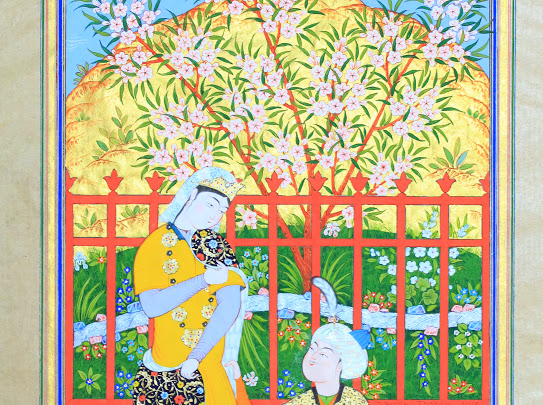
“Uzbek literature is an infinite, inexhaustible source of inspiration for the world in which I live and which lives in me,” he says. “I try to visually convey the immortal verses of wisdom, love and history.”
Modern slant
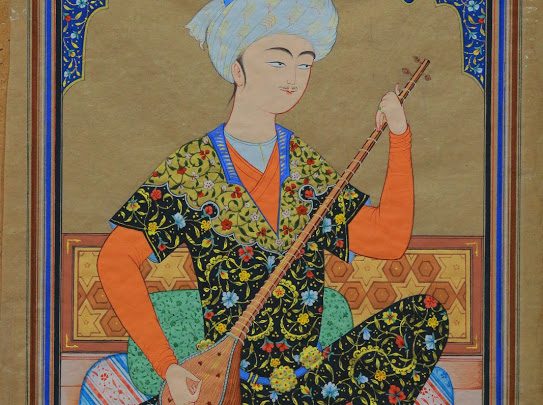
But Davron Toshev is certainly not stuck in the past. By subtly introducing new decorative motifs, compositional details or artistic materials such as modern gouache or tempera, he brings a unique contemporary presence and fresh talent to this ancient tradition. Thanks to the fineness of his brushwork, detailed draughtsmanship, lovingly executed ornamental patterns, impeccable taste and inherent sense of harmony, Davron’s pieces are easily identifiable and appreciated by art connoisseurs all over the world. His paintings have been exhibited in Paris, Marseille, Geneva, Moscow, St. Petersburg, and other major cities and are much sought-after by collectors and museums in Russia, France, UK, Turkey and UAE.
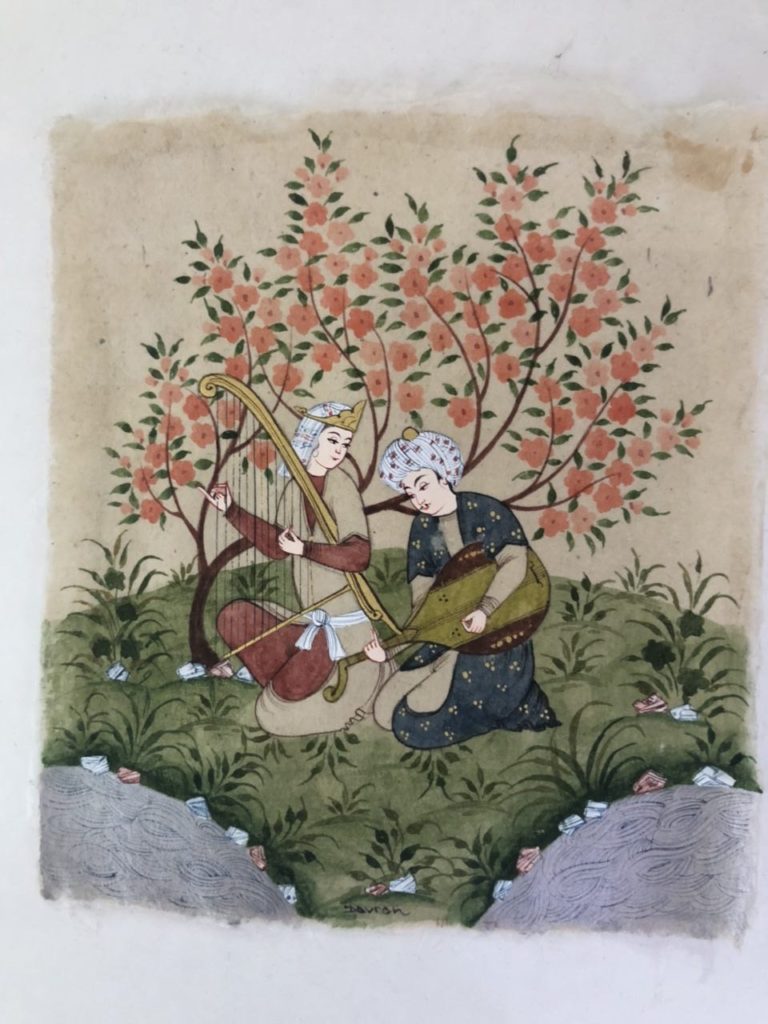
Miniaturist paintings have been enjoying a comeback in Uzbekistan since the 1970’s and are developing as a dynamic, versatile art form. Stepping out of the pages of old manuscript, these fabulous small paintings are now claiming new ground, adding their distinct charm and beauty to a whole range of items, from leather goods to gourds.
The bigger picture: historical context
The art of miniatures dates back to the Middle Ages when minute paintings were first used in codices in Arabia, Turkey, Iran and Central Asia. Using a brush made from just a single hair, medieval artists would illustrate the works of great poets and philosophers with incredibly detailed pictures that captured the spirit of the day. The delicate, flowing lines and enchanting beauty of theses drawings is perfect for conveying love, laughter and natural harmony, themes as relevant today as they were centuries ago.
But after flourishing from the fifteenth to the seventeenth centuries in Iran, Central Asia, India and Turkey, under the patronage of such great rulers as Timur and Ulugh Beg, this art form gradually faded. Codices were replaced by printed books, and the wondrous secret of illuminations gathered dust on the pages of ancient manuscripts.
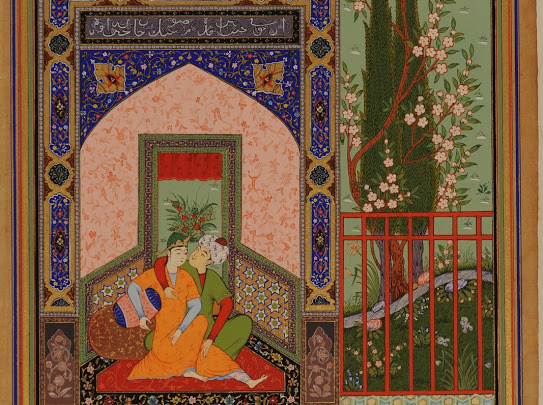
The last century brought renewed interest in this lost tradition, and gifted young artists like Davron Toshev began delving deep into the mysteries of an ancient art form that once blossomed here in Uzbekistan.
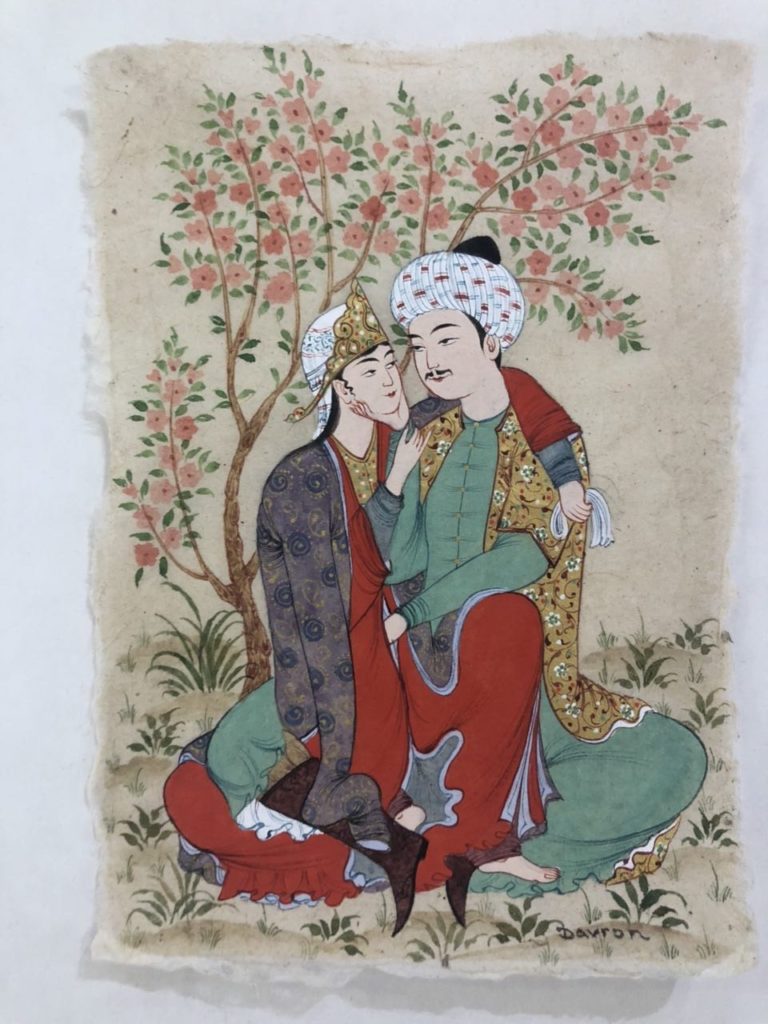
For Davron Toshev, the revival of this school is not simply a matter of applying traditional external techniques, stylistics, decorative codes or subject matter; for Davron, the most important task is preserving the secrets of great art and passing them on to the next generation, for it is this enigmatic beauty which draws people to Bukhara from all corners of the globe. Indeed, the sophistication of these images never ceases to amaze and delight the modern audience, too.
